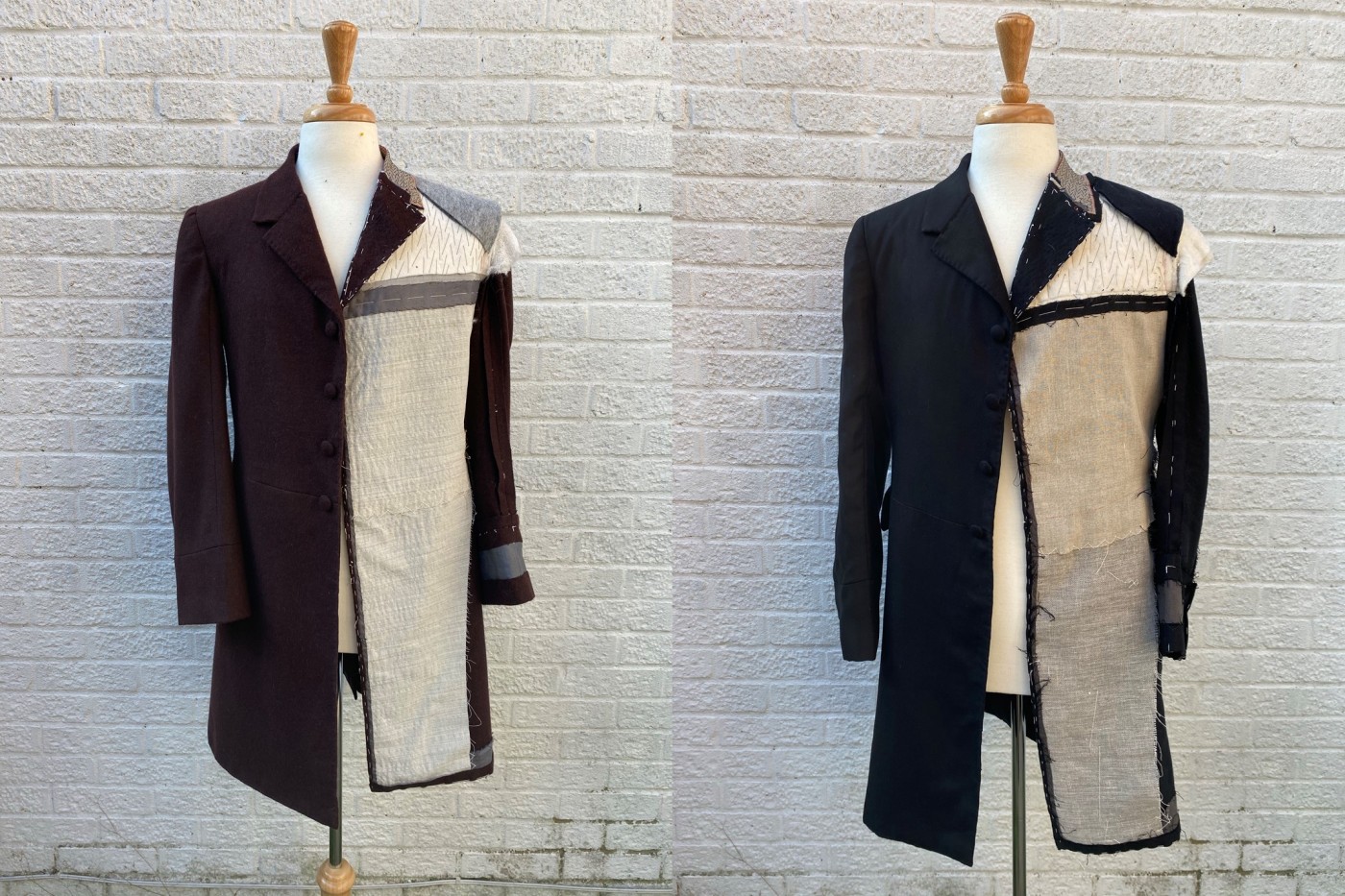- youtube
- bluesky
- Home
- About
- Costume Journal
- Membership
- Conference & Events
- Grants & Awards
- News & Social
A Sustainable Approach to Designing Historical Costumes for Performance
My MA in Historical Costume at Arts University Bournemouth focused on sustainability through practice-based research and whether trying to be more environmentally aware, animal friendly and fair trade conscious compromises design.
My original area of interest was to create historically accurate costumes with sustainable materials, however due to the Covid19 pandemic and subsequent lockdown I was unable to carry out research that wasn’t based online. My focal point shifted slightly to costumes made for performance, with less pressure to be historically accurate.
I chose to examine whether being more sustainable would be detrimental to the design or if this is a necessary change the industry needs to make to curb the current climate emergency and reach net-zero carbon emissions by 2050.
My initial research explored the impact of the textile industry on the environment, what materials should be avoided and whether there are any suitable alternatives. For example cotton, even though a natural and biodegradable material, is one of the worst environmental polluters due to the amount of land, pesticides and water it uses. It takes 2,700 litres of water to make one cotton t-shirt. Synthetics, such as polyester, are unsustainable because of the use of fossil fuels and the end product not being biodegradable. Leather, although classed as a natural material, uses a lot of chemicals to make it a useable as a fabric. One of the worst impacts on the environment is animal agriculture, so even vegetable tanned leather has an adverse effect on the planet. According to the Higg Materials Sustainability Index, the fabrics with the highest impact are leather, silk, cotton and wool, all animal-based products bar one.
The first project I worked on was staging a performance of The Tempest for my local theatre company while trying to be as sustainable as possible. Theatre is generally more environmentally friendly as there is often the need to reuse, recycle and repurpose fabrics and costumes. The historical costumes were easy to hire, but due to budget constraints, the designs were often compromised. I recycled and repurposed a lot of materials. However, sustainable fabrics, especially newer inventions, are more expensive and hard to source if you aren't an established brand requiring 50+ metres.
As theatre is more likely to reuse and recycle, I decided to focus my research on film costume. I wanted to test as many sustainable fabrics that were available to buy by the metre as possible and chose to concentrate on two different areas of historical costume: 19th century men’s tailoring for the first half of the project, and medieval womenswear for the second half.
The tailoring was the harder of the two as there are very few sustainable alternatives to wool or synthetics for suiting, especially for historical looks. I tested several fabrics for the tailoring: cupro, organic cotton, recycled polyester and lyocell, all of which were unsuitable for historical costume. In order to test its viability for 19th Century tailoring I made two of the same garment, a single-breasted frock-coat with canvases and construction materials visible on one side and completed on the other so the differences can be seen. One was made in traditional fabrics and the other in a sustainable bamboo wool alternative. The canvases for the sustainable frock coat were made from entirely organic materials: linen, hemp, bamboo and cotton and the lining was bamboo silk, as opposed to hair canvas, wool and synthetics.
The garment I made for the second half of the project was medieval womenswear. I was inspired by the current trend for combining historical costume with fantasy. I wanted to use some of the new plant-based leather alternatives in this project so designed a costume that would include this. The outfit consisted of a kirtle dress and underskirt, both made with lyocell fabric (a cellulose fibre with a closed loop production method); Pinatex (pineapple leather) corset and accessories; and EcoLorica (a sustainable micro fibre faux leather) moccasins.
The fabrics for the medieval costume worked perfectly and behaved exactly how I would expect if using the more conventional, less sustainable, fabrics. The two faux leathers were both dissimilar to real leather. They performed the functions I needed them to, but may not work for other garments.
The frock coat fabrics worked well, the main issue being the bamboo wool was too thin and needed to be backed, making the process more time consuming and expensive. The overall cost of the sustainable frock coat was almost double that of the traditional material one, however this is due to supply and demand. Sustainable materials are still relatively new and a wide variety aren’t readily available yet. However, the fashion industry is becoming more conscious of this and increasing the demand for new materials (although not always suitable for historical costume the market is growing).
I would not have been able to complete this project without the help of the Yarwood Grant. It meant I was able to afford the new sustainable materials, bamboo wool for instance, and test more than I originally thought would be possible, rather than relying on lower-grade fabrics.
My project may be over but the research into more sustainable methods of textile manufacture and costume production is not; there is a long way to go to make the textile and costume industries more sustainable. Fabric production has a massively negative impact on the environment and my investigation just scraped the surface on the changes that need to be made. To be able to reach net-zero carbon emissions, all industries need to play a part in the effort to curb the climate emergency and, as an industry that has the power to influence society, it is the responsibility of the entertainment sector to be more sustainable.
Image gallery
A.Thomson, (2020). Image: the author

A.Thomson, (2020). Image: the author
A. Thomson (2020) Image: I.Newton

A. Thomson (2020) Image: I.Newton